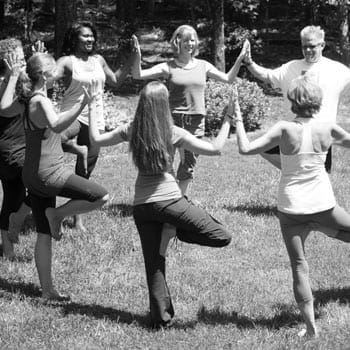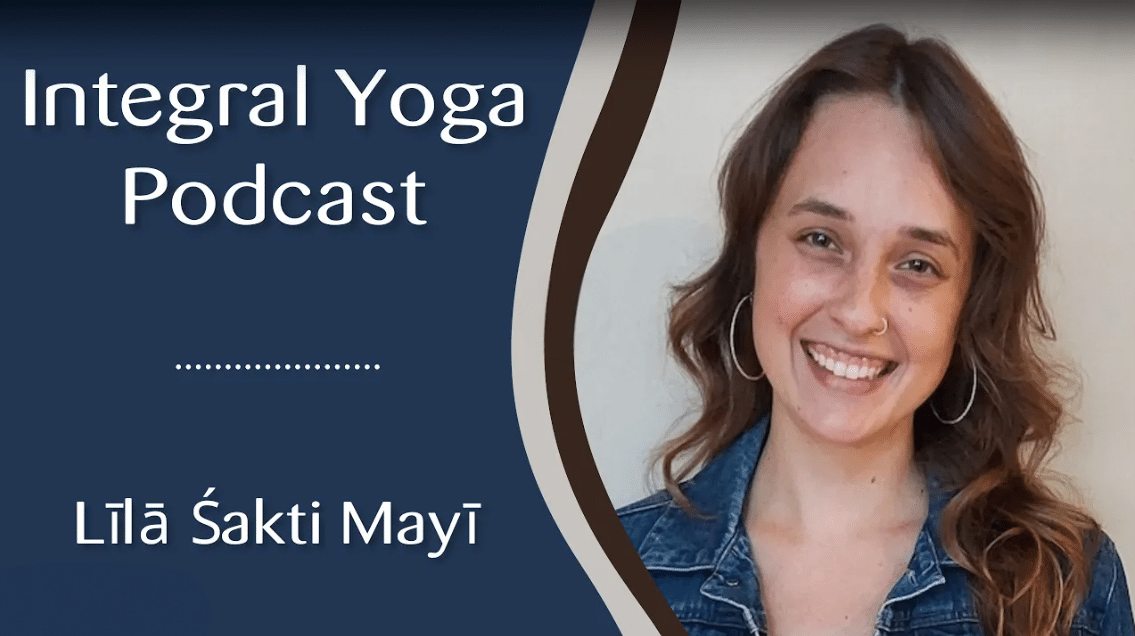How is the subtle body affected by life-altering and painful events? Learn from Karla Helbert, licensed professional counselor, Yoga therapist, and certified Integral Yoga teacher, as she explains chakras, koshas, and how we can practice remembering wholeness through grief and trauma.
What are chakras?
The chakras are energy centers that exist within the body. While not visible, the chakras correspond to specific physical locations in the body and are situated along the path of the spinal column and the head. The word chakra in Sanskrit means “wheel” or “circle”. Many traditions have terms for energy channels in the body, the nadis in Yoga or the meridians in Chinese medicine. The chakras are places in the body where these energy channels converge. Although today we often refer to a system of seven chakras in the body, some ancient Tantric and Vedic texts mention systems of up to twenty-one chakras or more depending on the different traditions. Other ancient civilizations around the world, including Egyptian, Mayan, Cherokee, Zulu, Islamic, Tibetan, and Buddist also have evidence of comparable energetic systems to the chakras. For example, the ancient Kabbalah system of Judaism is widely considered a form of the chakra system. It seems our ancestors, all over the globe, understood that we are far more than our physical bodies. Just like the physical body, our energy bodies move in and out of balance all the time, based on what we are experiencing. A natural shift in response to events should be expected. Our systems are always striving toward balance, even in the midst of chaos. Our chakras, even when imbalanced, are helping us, as best they can to find our balance.
What is a Kosha?
Kosha is a Sanskrit word meaning “sheath” and it describes our layers of being. The koshas are five concentric sheaths, each housed within the next. The outermost layer is the physical body but all other kosha layers are part of the subtle body. The chakras are part of the second kosha layer, called pranamaya kosha, which is the subtle body of breath, energy, and prana. Each kosha affects others. Energy flows through and around all the koshas. In Yoga teachings, this energy is known as prana, the Universal life-force energy. In traditional Chinese medicine, this force is known as Qi (“chee”), and in Japanese traditions as Ki (“kee”). When we are impacted by trauma and grief, all our koshas are affected. Because the chakras are also part of the subtle body, they require a great deal of work with what is not visible. So does our work with grief and trauma. The event has already taken place, so we must work with the past, what is no longer visible, and also with what is currently present in our own bodies. When we go through intense pain, our container often becomes weakened on all levels, including the subtle layers.
How are chakras and koshas affected by grief and trauma?
When we experience grief and trauma, homeostasis in the body is utterly disrupted, potentially for long periods of time, resulting in physical, mental, emotional, spiritual, and energetic chaos in our system. The physical body is assaulted by stress hormones, our energy is often depleted, or surges unexpectedly, finding ourselves toggling back and forth between extreme states. Our mental body is under assault from painful, intrusive thoughts and our wisdom and intuitive bodies are undermined. Being aware of how you are affected by the energetic changes brought on by grief and trauma and what is happening within your chakras can greatly support you in your journey back to balance. Ultimately, everything I teach is about strengthening our containers. I spend time with individuals and groups, talking about the yogic system of the koshas.

How can we heal?
In my upcoming program, Strengthen Your Container with the Chakras: Re-Membering Wholeness, we will focus on strengthening the containers so that we can carry what must be carried as well as heal what can be healed. We practice ways of feeling and being present with the energy in the body, using multiple tools to be with, to observe, to move and to shift energy. Intention and compassion are major factors in working with the energy body and the chakras. We practice working with and accessing our energy with as much compassion and as little judgment as possible. [It was] Yogi Amrit Desai who said:
“In search of the Divine, we go everywhere. We go to places of pilgrimage, visit temples of God, follow many paths and disciplines—and ignore our bodies. Your body is the most sacred place of pilgrimage you will ever come to. Go within and explore the Divine within you.”
Coming to know our energy body, its energy centers, and how they work to support every aspect of our lives can help us to know how sacred our own bodies are, how sacred we are as whole beings. This kind of realization, particularly for those who feel fragmented by experiences of trauma and loss—leads to a re-membering of ourselves. A putting back together. Which is the ultimate goal of Yoga itself. Yoga is Unity. Our chakras are a pathway to understanding that essential wholeness.



